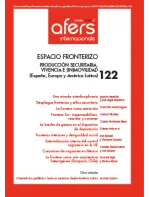The internal externalisation of borders for migration control in the EU

The friction that has occurred – and continues to occur – at some of the European Union’s internal borders is a reflection of mechanisms for the delegation and transfer of immigration control between member states. This paper addresses these dynamics – defined as “internal externalisation” – through a comparative analysis of the specific management and legal regulation of France’s border with Spain and Italy. These two borders are similar in many respects (being two mountain ranges) but are, at the same time, very different (in the geographical intensity of the controls and types of crossings). Comparing them could reveal the border control mechanisms that characterise the subordinate relationships between member states, and which represent true externalisation of the EU's internal borders. Some states are forced to take on the role of containment states.
Keywords: European borders, internal externalisation, bilateral agreements, immigration, Spain, Italy, France, EU
DOI: doi.org/10.24241/rcai.2019.122.2.137
>> The full text articles of this issue are available only in Spanish language
How to cite this article:
Barbero, Iker y Donadio, Giacomo. «La externalización interna de las fronteras en el control migratorio en la UE». Revista CIDOB d’Afers Internacionals, n.º 122 (septiembre de 2019), p. 137-162. DOI: doi.org/10.24241/rcai.2019.122.2.137
Information about the authors:
Iker Barbero, profesor agregado, Departamento de Derecho Administrativo, Constitucional y Filosofía del Derecho, Universidad del País Vasco/Euskal Herriko Unibertsitatea.
Giacomo Donadio, investigador predoctoral, Departamento de Derecho Administrativo, Constitucional y Filosofía del Derecho, Universidad del País Vasco/Euskal Herriko Unibertsitatea.